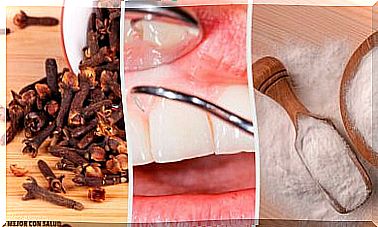Orthomolecular Nutrition: What Is It?

Orthomolecular nutrition is originally a therapy based on the supply of nutrients to the body to supplement deficiencies due to disease. These dietary supplements must come from natural sources.
According to the AENTOC (Spanish Association of Orthomolecular Nutrition), orthomolecular nutrition aims “to promote the absence of disease in the patient and to enable individuals to live in a good state of health. ”
A brief historical overview
Orthomolecular nutrition is not new. Linus Pauling, who won the Nobel Prize in Chemistry in 1954, was known to be the first to define the term orthomolecular.
dr. Katherine Kousmine also used the supplementation treatment to treat diseases such as multiple sclerosis, polyarthritis and some cancers. Today, the Kousmine Foundation (French link) is committed to the training and further development of this doctor’s method.
One of her students was Jean Seignalet, who treated a large number of patients in France. He wrote the book ‘La Nutrition ou la troisième médecine’ (Nutrition or the third medicine). This book has been republished several times and translated into several languages.
How does orthomolecular nutrition work?

According to the foundation of this discipline, diseases arise due to a biochemical imbalance of the body that affects our cells, causing imbalances. By providing the cells with the right micronutrients, we achieve an optimal balance and proper functioning of the body.
This is achieved by treating existing diseases, as we have seen above. But it can also improve non-specific conditions, such as migraines, lack of energy and digestive problems. The necessary micronutrients for our cells include:
- vitamins, such as those of the B group, vitamin C and vitamin E.
- minerals, such as calcium, magnesium or potassium.
- trace elements that are needed in very small quantities: lithium, copper and manganese.
- amino acids, including L-glutamine, L-arginine, and L-carnitine.
- essential fatty acids, such as omega 3 and 6 fatty acids.
What does an orthomolecular nutritional treatment consist of?
Treatment based on orthomolecular nutrition is always personal and individual. A specialized doctor or therapist first assesses the patient’s nutritional status.
Certain analytical tests allow specialists to identify where the biochemical imbalance exists, what nutritional deficiencies exist, and what needs to be corrected. In general, the use of certain supplements is necessary.
The first therapeutic tool is a diet. These diets are intended to optimally nourish the cells. They are generally based on the intake of high-quality proteins, unsaturated fats and complex carbohydrates.
These diets specifically avoid added sugars, dairy products, and saturated fats. If necessary, the doctor will supplement the treatment with other alternative therapies. They also usually provide guidelines for a healthy lifestyle. For example, think of:
- enough exercise.
- good night.
- avoiding stress.
Does orthomolecular nutrition have support from the medical sector?

As in many situations when we talk about diets and therapies, there are defenders and opponents of the advice. Let’s see what position they take on orthomolecular nutrition.
The limitations of this diet
Those who are critical of orthomolecular nutrition do not find it reliable, mainly because it is not based on proven scientific studies. In addition, they also question the use of vitamins, minerals and other nutrients.
These are sometimes prescribed in amounts well above the amounts officially recommended by organizations such as the European Food Safety Agency (EFSA ) or the US Institute of Medicine . In addition, such high doses can cause short-term and long-term adverse effects, according to these organizations.
Some organizations and voices from the medical and nutritional sectors, such as the Royal Academy of Spanish Medicine, the Spanish Association of Dieticians and the nutritionists of the American Cancer Society , claim that there is no evidence of its efficacy, describing it as “parascientific, misleading and potentially dangerous.”
The benefits of orthomolecular nutrition
For the defenders of this discipline, diet as a therapeutic tool is a reality. Even conventional medicine uses combined treatments.
According to professionals dedicated to orthomolecular medicine, there is evidence and medical experience supporting positive outcomes in treating, among others:
- schizophrenia.
- depression.
- anxiety disorders.
- attention deficit and hyperactivity disorders.
In addition, the use of orthomolecular medicine and nutrition goes well with conventional treatments and has shown good results.
Orthomolecular nutrition arouses interest
In general, orthomolecular nutrition tries to balance the biochemistry of the body to ensure that all body systems function properly. Some medical professionals and nutritionists describe it as pseudoscience. However, the truth is that it is gaining ground as a tool for curing and preventing certain diseases.









